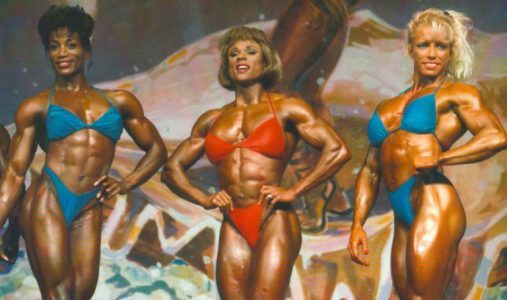The World Wrestling Federation did a business experiment back in 1991. Vince McMahon had the idea holding bodybuilding contests and a new league. The World Bodybuilding Federation was intended to be a rival to the IFBB. The Weiders had a virtual monopoly on the sport owing several magazines and being the promoters of contests. Vince McMahon was similar, with his hold on professional wrestling. There were a number of independent wrestling circuits, but most wrestling fans watched the WWF. The WCW would emerged later to compete with the WWF. The WBF was announced in 1990 at the closing ceremonies of the Mr. Olympia contest. The announcement was considered ambush marketing. Tom Platz who was also one of the developers of the WBF, expressed that the new organization was going to be a formidable business rival. Vince McMahon wanted to make bodybuilding follow more of a sports entertainment model. Ben Weider was annoyed by the marketing stunt. The WBF did not cause concern for him. The Weider monopoly was too powerful. The WBF was an interesting concept, but did not survive for several reasons.
The WBF had a small roster. Only 13 competitors had contracts to the WBF. The athletes were all men. Women did not compete in the WBF. This was a major mistake. The objective should have been to increase the roster of athletes. A women’s division in the WBF could have added more to the roster. No contracts were offered during the 1990 or 1991 Ms. Olympia. Vince McMahon hired female wrestlers, so it would have made sense to reach out to female bodybuilders. This would have helped with the diminutive competitor count. More research should have been done to see who would be willing to compete in the WBF. A 1993 launch could have prevented these problems . Building up a competitor roster between 1990 to 1992 could have fixed this issue.
The WBF tried to attract athletes with higher pay and better contracts. Women who competed earned less compared to their male counterparts. Many women competing in the IFBB would have probably gone to the WBF for that reason. A women’s division was not present. The roster shrunk further when a number of athletes failed drug tests in 1992. A major competition needs a number of athletes to keep it interesting. IFBB competitors did not defect , because they were comfortable working with the Weiders. The WBF was a new business venture. The risk and fear of change could have been a concern for not switching to the WBF. As a counter measure, the Weiders prohibited any WBF athletes from competing in IFBB contests. This could have effected the WBF’s roster. The WBF did not anticipate the need for a bigger roster of athletes.
The WBF appeared that it wanted to fuse pro wrestling gimmicks with bodybuilding competition. It was insisted the WBF was not a combination of bodybuilding and wrestling. The pro wrestling like interviews, ring names, and skits that were kayfabe were inserted into the WBF. The big problem is that physical feats and fighting were not a part of the entertainment. The WBF was more like bodybuilders cosplaying characters What made the WWF and game show like American Gladiators popular was the physical feats. Seeing the strongest athlete pulverize opponents excites the audience. The bodybuilding fandom is more amused with the aesthetic of the physiques on stage.






The purest bodybuilding fans would reject the WBF, due to the association with the WWF. Wrestling fans might find the posing routines of bodybuilding boring. The WBF should have followed a model similar to the American Gladiators and the WWF. Bodybuilders could compete in various physical events. They could do joust, tug of war, or freestyle wrestling. This is the sports entertainment model that should have been used. This would have made the WBF unique.
Broadcasting was an other challenge. The pay-per-view offers did not produce a profit. Bodybuilding was shown on ESPN and NBC. The WBF was a subsidiary of Titan Sports. The WWF was shown across various networks. USA, UPN, and in syndication. The WBF done this. Making a pitch to a network would be difficult, but syndication would have been more viable. Getting the WBF on ESPN was not possible. The Olympia was being broadcast there and the Weiders could have taken legal action.



The WBF experiment was having problems from the start. Poor business decisions were harming the WBF, including creative choices. Trying to disassociate from pro-wrestling was hard to do when Titan Sports owned the WBF. The aesthetic and stage design felt like a wrestling promotion. Few were familiar with the WBF and the marketing was not cogent enough. Getting a broadcast deal would have helped. PPV events just target people who know about the championship. Network or cable broadcast would have drawn in more viewers.
The WBF also published a magazine and had an association with Integrated Conditioning Programs supplements ( ICOPRO) . These ventures wasted resources. Producing a magazine requires more labor and stores willing to carry it. The Weiders had Flex including Muscle and Fitness. Certain areas it is more insuperable to challenge longtime companies. The Weider dominance in fitness publication was unmatched. Supplement production and advertisement was another error. Making other types of merchandise was an alternative. Tee-shirts or toys were options to the WBF. The WWF products include a number of action figures and items for retail.



There is no reason why the Bodystars personas could be made into products. A toyline could have been created using athlete’s likeness. Marketing to children can be a huge profit generator. The Bodystars could have been adapted into an animated series for Saturday morning cartoons . Gary Strydom was the only winner of the WBF contests in 1991 and 1992. He was not promoted as much as could be for a new sports organization. The winner of the contest should get more public exposure . A few PPV events and magazines limited the WBF’s reach. Investing in providing exercise equipment to consumers was an option.
The World Bodybuilding Federation was a business failure for Vince McMahon. The WBF could have been an alternative to the dominance of the Weider Corporation. McMahon called Ben and Joe Weider to say that the WBF was defunct. The discussion was mostly about letting the athletes competing in the WBF return to the IFBB. An agreement was reached and the athletes of the WBF would be allowed back to the IFBB. The WBF did not succeed for a number of reasons. The WBF needed more marketing to generate interest. There needed to be a clear choice. The WBF was torn between being sports entertainment or purist bodybuilding competition. Wrestling and bodybuilding fandoms are very different. If these two groups were united by the WBF, it would have been unique. Instead, the WBF became almost like parody.



The event was sports entertainment without the stunts and physical feats. Shelley Beattie, Raye Hollitt, , Shari Pendleton, and Tonya Knight were bodybuilders and American Gladiators. If the WBF reached out to them and sought their advice maybe the situation could have been improved. Using the gameshow format might have attracted viewers. Making it a PPV event did not help. Either getting the WBF on network or cable television would increase its profile. Adding to the roster and having women’s divisions was needed. The contracts were lucrative and would be attractive to women athletes in the IFBB. Getting Lenda Murray would have raised the profile of the WBF. She was under Weider contract, but getting her to guest pose would not be a competition. Publishing a magazine and the ICOPRO venture was a waste of financial resources. The experiment was a bold one, but the WBF could not challenge the IFBB. Vince McMahon did not do anything too innovative with the WBF. The World Bodybuilding Federation only existed for two years, but it was trying to be alternative to the IFBB. The WBF will remain a relic of the 1990s.



